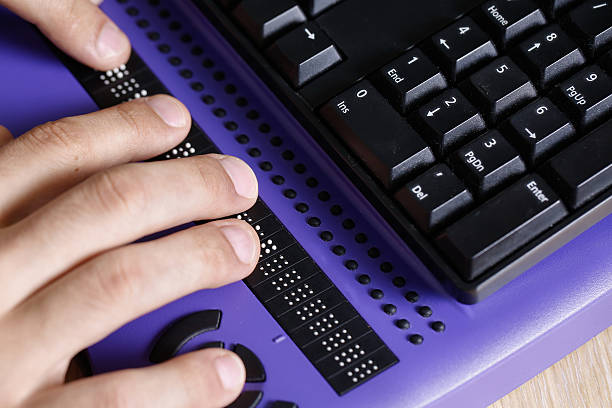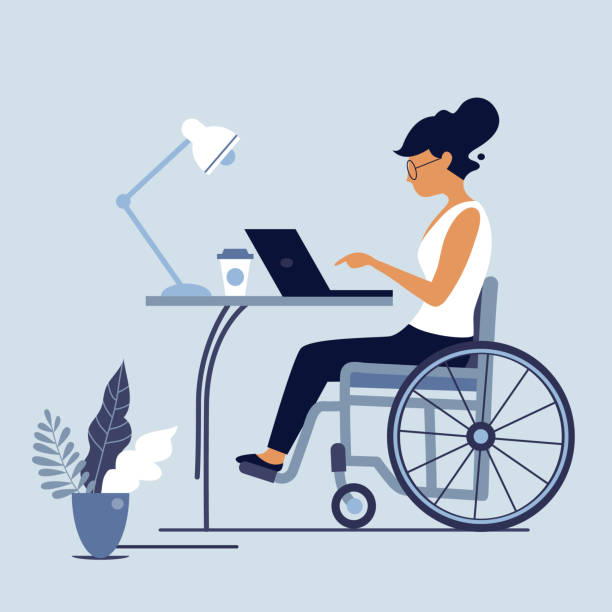Current website facilities for people with disabilities:
WCAG 2. 1 has three tiers of so-called success criteria:
level A – the minimum required for proper functioning without exclusion,
level AA – elements that should be included on the website,
level AAA – elements that can provide greater comfort for the target group.
These levels change over time. As technology advances, what was once only possible becomes necessary, needed to move in the world of the Internet. Smart people, with a sense of value, try to make sure that every group of people
with disabilities has found a way to enhance the online experience. At the bottom is a list of some of the improvements that have been made for them so far.
Blind and visually impaired persons:
That is, just the blind, as well as the elderly visually impaired or people limited only by time, such as those suffering from conjunctivitis. Facilities such as:
- Alternative text – this is text hidden in the page describing what is shown on the screen. It can be read by the device, so people with vision problems can find out what is on the site.
Ability to change font size – adjusting the font and its layout is important when reading text for the elderly and visually impaired.
Deaf and hard of hearing people:
- Speech-to-text transcription – This is a synchronized audio-to-text translation that helps you interpret recordings.
Sign interpreter in films – a person who translates sentences spoken in a recording into sign language.
People with color vision disorders:
We are not just talking about Daltonism, but other disorders such as Tritanopia, Protanopia and Achromatopsia. Examples of features that are helpful to people with these problems might include:
- ability to change colors and contrast of the page – the site should be able to change the contrast between the background and text and adjust the background and text colors accordingly.


Current physical facilities for people with disabilities:
Over the years, many products have been developed to help people with disabilities navigate the Internet with ease. A few of them are, for example:
- Eye tracking reader – registers in which direction
our gaze is directed and allows us to control the page with these
readings. - Keyboards adapted to various disabilities, e. g.
braille keyboards, one-handed keyboards, single-key keyboards. - Mouse replacement devices, such as trackballs and joysticks. They replace the mouse for people with manual problems or paralysis, as they require much smaller movements.

Future possible innovations for people with disabilities
Currently, a small percentage of pages on the Internet comply with the WCAG 2. 1 standard. Many of them do not have a single facility and are not adapted to the needs of people with disabilities, even the popular sites lack this standard. As a project group we aim to spread this way of creating content on the Internet. As our goal evolves, the success criteria will change its category and become a requirement for the WCAG standard. This will make more users of electronic devices feel comfortable in the online space. Right now, there are more and more innovations emerging to help such people. New ideas are generated every day, for example:
- Work is currently underway on a special type of chip that is implanted in the brain. It is designed to receive sent signals that could be used to control a computer with the help of artificial intelligence. Apart from giving commands to the computer, it will also be very helpful in communication because as the company mentions, the chip will give telepathic abilities.
- There are already eSight glasses for people who have very poor eyesight and can thus be considered blind. They use an advanced camera that allows such people to transmit images without delay. Unfortunately, they are currently very expensive, so not many people can afford them, but with time they will develop which will make them more common, cheaper and more convenient.

sources:
https://bulldogjob.pl/news/1493-musk-planuje-w-tym-roku-wszczepic-chipy-neuralink-do-ludzkiego-mozgu
https://www.geekweek.pl/news/2018-03-05/esight-okulary-ktore-pozwalaja-widziec-niewidomym_1663865/
SUCCESS CRITERIA (A, AA, AAA):
https://instytucje.itee.pl/blog/373-standardy-wcag-2-1-dla-instytucji-publicznych.html
https://dostepnastrona.pl/artykuly/co-nowego-w-wcag-2-1
IMPROVEMENTS:
http://idn.org.pl/techno/comp_npn.htm
BRAILLE KEYBOARD:
panizkomputerem.pl/niewidomi-uzytkownicy-internetu-jak-im-pomoc/
PICTURES FROM:
